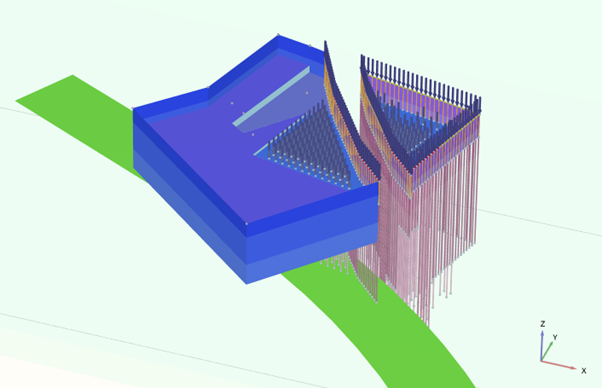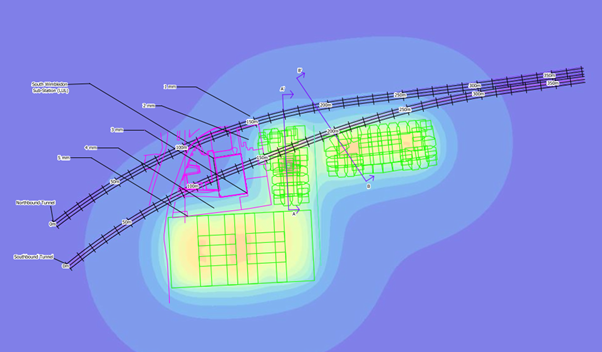As part of our 23forGE2023 series, we’re excited to shine a spotlight on our capabilities in ground movement modelling and impact assessments. At CampbellReith, we go beyond conventional engineering practices, developing sustainable solutions whilst securing acceptance from third-party stakeholders such as Thames Water, London Underground and Network Rail.
Soil structure interaction is the intricate study of how the ground and structures above it mutually influence one another. This analysis delves into the dynamic interplay of forces, ensuring that structures are not only supported adequately but also respond appropriately to the surrounding soil conditions.
Complementing soil structure interaction is ground movement modelling and analysis, a tool that allows us to anticipate and analyse potential deformations in the ground. Why does this technical understanding matter? In essence, it forms the backbone of robust structural and geotechnical engineering. By comprehensively grasping how the structure interacts with the ground, we can implement informed design decisions, enhancing the longevity and performance of our structures and safeguarding assets like tunnels, sewers, railways lines, etc…
Our proficiency in ground movement modelling is a testament to our commitment to innovation. Utilising in-house developed spreadsheets and a repertoire of state of the art software including Plaxis 2D, Plaxis 3D, WALLAP, PDisp, XDisp and SLOPE/W, we employ a holistic approach. Integrating Python and programming into our spreadsheets, we elevate the precision and efficiency of our analyses.



Using finite element modelling software like Plaxis 2D and Plaxis 3D, we can simulate and analyse complex geotechnical scenarios, from multistorey basements to 30+ storey towers. These simulations offer detailed insight into how structures interact with the soil around them and how they respond to various loadings and conditions. This information is crucial for optimising designs, ensuring stability, and mitigating potential risks.
What sets us apart is our in-house collaboration with the structural team. This synergy enables us to develop holistic solutions that not only ensure structural integrity but also yield significant economic benefits for our clients. Through value engineering, we not only optimise costs but also contribute to sustainable practices.
Would you like to discuss further? If so, please contact the team!
Stay tuned for more insights as we continue our #23forGE2023 series.
